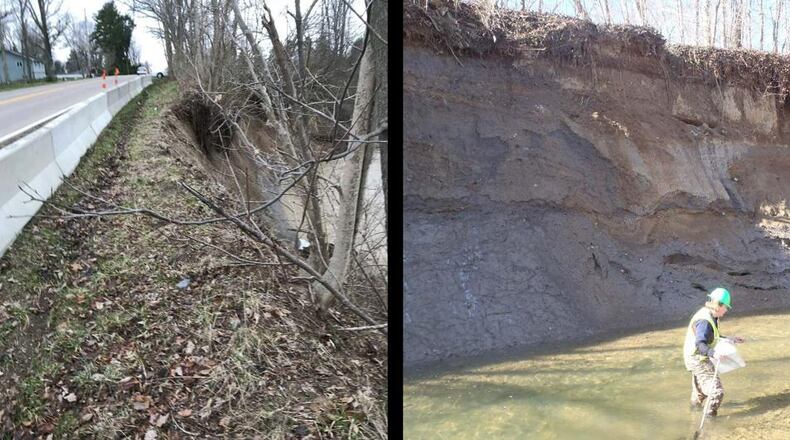The final project in the second phase will make improvements to a Kettering site near Newmark Drive.
At the Kettering site, the sanitary sewer has been exposed by water eroding the earth that used to be around it. Parts of roads in Montgomery County have washed away due to erosion, making these projects necessary to protect the public.
“If you have more severe storms, erosion can happen faster,” Turnbull said.
RELATED: ‘Small portion of the road is gone’
Many of the sewer lines were put in nearly five decades ago, Turnbull said, so the areas were already in need of reconstruction.
The county’s sanitary sewers work via gravity, Turnbull said. When the sanitary sewers are constructed, they are put at a low point, and often near a creek or stream. Over time, the streams or creeks erode and change their path and can expose or damage the sanitary sewers, according to Turnbull.
“So if it happens for long enough, it can undermine the sanitary sewers if they are in close proximity,” Turnbull said.
This has happened in a variety of locations in Montgomery County and Turnbull said this is a problem that Environmental Services has been monitoring for years.
RELATED: Montgomery County again trying to keep a road from crumbling into a waterway
Environmental Services conducted a study in 2017 that looked at the worst of those locations and determined the best ways to fix and stabilize drainage-ways. This means changing the way the stream or creek flows, building a bank that has a more gentle slope or adding walls and drainage in places where these things previously weren’t.
Turnbull said the county’s most recent action brings the second phase of this project to a close, but he anticipates more erosion abatement projects in the future.
About the Author

